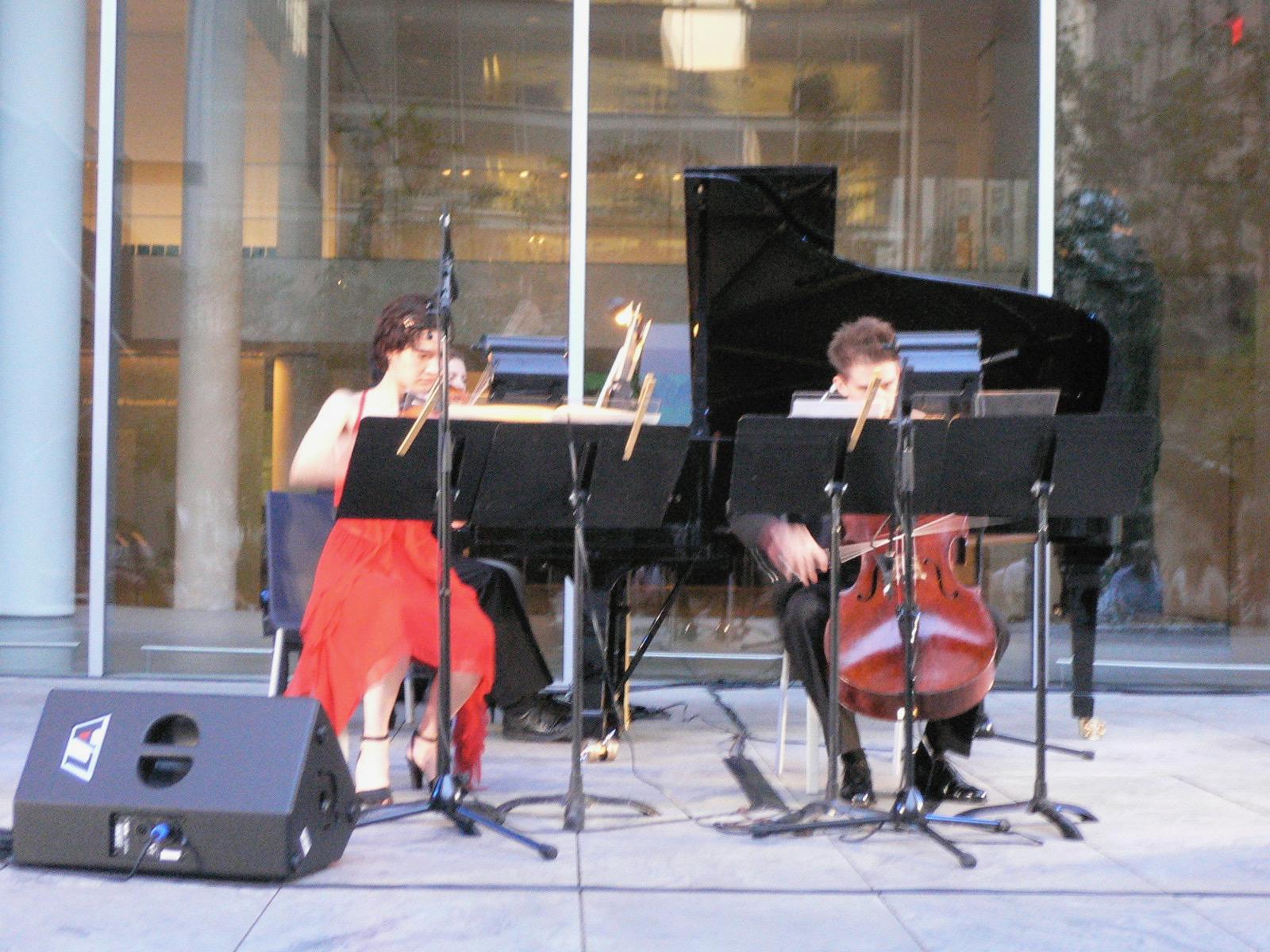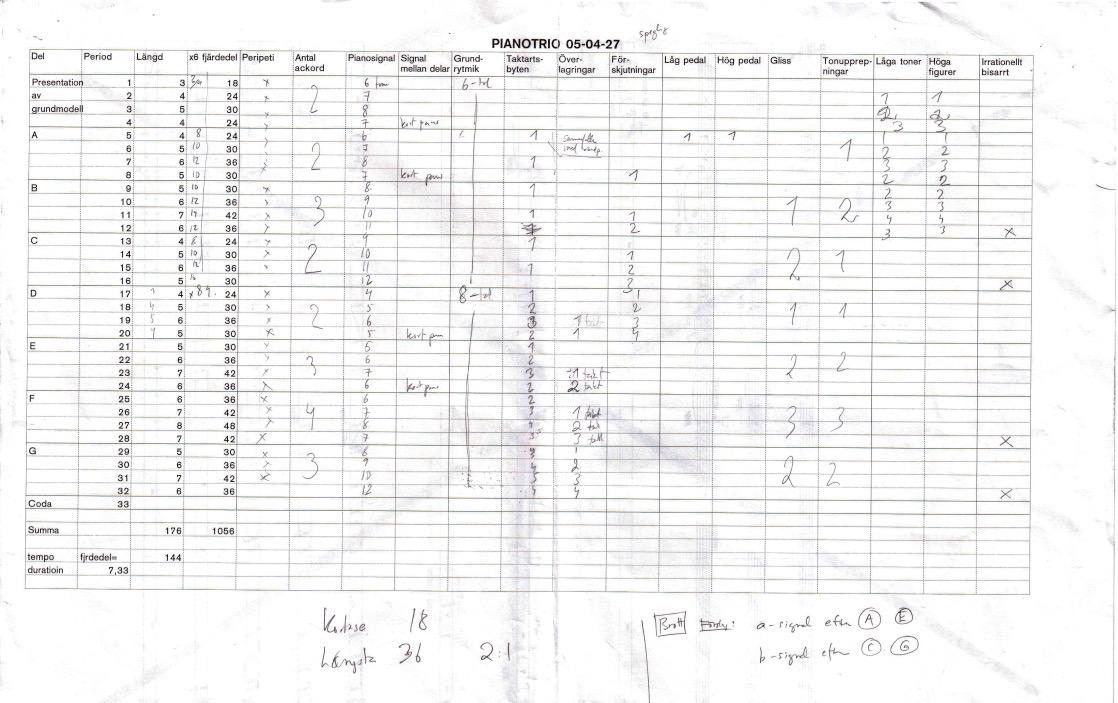the memory of the arpeggiated forms gave them a phantom perspective
– Allan Kozinn, The New York Times

Bryta snitt. Tiden fryser was composed to be premiered in the St. Nicolaus ruin in Visby, a medieval Swedish town on an island in the Baltic Sea. Visby is classified as "World Heritage". An impressive defense wall is surrounding the town and there are many ruins from old churches and monasteries.
“Cut sections” refers to one of the ways an architect describes a building by drawing a section that cuts the building where it's the most interesting. The cut section line is not necessarily straight. This is something you'll only expect to find in drawings. But when visiting the ruins of Visby you can experience cut sections in real. It's very beautiful.
So you will hear cut sections in the music, a sharp move from the cello to the violin as they play arpeggiation on harmonics. These broken chords have an amazing sound quality. All the rhythms come from the different ways you can work the bow to play the arpeggiation.
The pointillistic figures in the piano derive from a quotation from a piece by Bo Nilsson, the Swedish composer that became famous during the pioneer times of the Darmstadt summer course in the fifties.
The piece is dedicated to Staffan Scheja, one of Sweden's most prominent pianists. I was extremely happy when Staffan asked me to write a piece to celebrate the 20th anniversary of the Gotland Chamber Music Festival.
Henrik Strindberg






- MoMA Summergarden 2006 by Miranda Cuckson, Christopher Gross and Philip Fisher, New York
- ISCM 2009 by Athelas (Denmark), Gothenburg, Sweden
- Nordlysfestivalen 2011 by Norbotten NEO, Tromsø, Norway and Sound of Stockholm 2011
- Students from Edsberg, Forum, Stockholm 2014
- Trio Nova, 2017, Uddevalla
- Students from Edsberg, Stockholm 2023
Original title: Cut Sections. Time Freezes (Bryta snitt. Tiden fryser)